(On August 8-10, 2023, Malaysia’s Institute of Strategic and International Studies (ISIS) conducted a seminal international conference called the 36th Asia-Pacific Roundtable.[1] Towards the overarching aim of maintaining ASEAN centrality in regional security affairs, ISIS Malaysia—as part of the ASEAN-Institutes of Strategic and International Studies (ASEAN-ISIS)—has been conducting the APR since 1987. The following is an overview of the discussions held.)
Lately, the Asia-Pacific Round Table (APR) has emerged as a renowned and consequential Track-Two platform for Asian security. It is regarded as second only to the Track 1.5 Shangri La Dialogue conducted by Singapore, though many even consider the APR as more ‘productive’ than the latter, inter alia, in terms of the value of its policy outcomes, since these are based on more forthright expression of views, leading to more profound discussions.
The theme of the 36th APR was “An Age of Strategic Uncertainty”. The deliberations highlighted the emerging geopolitical and security environment in the Indo-Pacific region, and the trends and tribulations of the Indo-Pacific concept itself. The author was invited to the Conference to speak on the Indian perspective on the Indo-Pacific concept. The APRs conducted in the past decades have rarely solicited views from South Asia in their plenary sessions, but this trend is changing. The Indian perspective is been increasingly sought on various issues of regional security. Whereas the author’s role in Plenary 2 of the 36th APR was mainly sought due to his contribution to the origins of the Indo-Pacific concept, the trend of growing Indian participation is augured by India’s rising profile in global geopolitics.
The aim of this brief is to highlight the salient takeaways from the 36th APR, as may be relevant to India. These takeaways emanate from the analytical extrapolation of the Conference talks and deliberations, and one-on-one discussions with the Conference delegates from various participating countries.
Taiwan Issue
The consensual view at the 36th APR was that an armed conflict between China and the United States (U.S.) over Taiwan is “not inevitable”, but is “becoming more possible” in the coming years. Ostensibly, this view emanates from the seemingly irreconcilable divergences between the two major powers. It also seems to be in consonance with India’s policy assessment, considering that during a conclave of the top military commanders in July 2023, India’s Chief of Defence Staff directed the Indian armed forces to study and identify options for New Delhi in case of an armed conflict over Taiwan.[2] Accordingly, the present strategic focus of the U.S. government in the Indo-Pacific region is on a Taiwan conflict scenario.
ASEAN Perspective on Ukraine War
The Malaysian Prime Minister was refreshingly candid and clear in expressing his position on the ongoing Russia-Ukraine War. It may be summarized as: Undeniably, Russia’s invasion of Ukraine runs counter to the principles enshrined in the United Nations (UN) Charter, and thus, cannot be encouraged. Nonetheless, Russia’s security compulsions caused by the actions of the West must also be factored, including in any the peace negotiations that may be conducted to end the war. This view highlights the imperfections of the present-day global rules-based order and UN-based multilateralism to preserve global security, and thus calls for UN reforms. This position is very similar to that adopted by India and most other countries of the Global South. It also conforms well to what the Malaysian Prime Minister had stated earlier in the context of the development of a “practical geo-strategic architecture” for security in the Indo-Pacific region, which “must take into account the views of the Global South”.
Emerging China-Russia-North Korea Axis
For America and its NATO allies, the Ukraine War has also led to America’s anxiety over China’s emerging strategic nexus with Russia. Furthermore, the role of North Korea in such implicit nexus seems to have become more serious lately, rather than Pyongyang’s ballistic-missile demonstrations and threats against Tokyo and Seoul. Ironically, the North Korean nuclear threat has been helpful for the U.S., not only to tighten its bilateral military alliances with Japan and the Republic of Korea separately; but also, to foster a strategic embrace between these two estranged democracies, and form a trilateral alliance with them against the emerging China-Russia-North Korea axis.[3]
South China Sea Disputes
Apart from the continued Freedom of Navigation Operations (FONOPS) by the U.S. Navy and the combined exercises with the regional navies in the Western Pacific, the U.S. continues to avoid any direct involvement in the maritime disputes in the area, including in the South China Sea (SCS). Nonetheless, for long, Washington has been encouraging the ASEAN to seek an acceptable and legally binding SCS Code of Conduct (COC) with China.[4] The U.S. alleges that China does not want a legally-binding COC, and it, therefore, is delaying its fructification by prolonging the deliberations, inter alia through its ploy to search for the unachievable ‘Holy Grail’, such as a modus operandi that will make the COC provisions enforceable. Since July 2023, the negotiations have been accelerated. A legally-binding and effective COC may be hoped for. However, one that does not cater for the legitimate interests of the other stakeholders in the SCS under UNCLOS provisions may turn out to be worse than no COC at all.
America’s ‘Soft’ Engagement
Since the publication of its Indo-Pacific Strategy in February 2022, the U.S. seems to have stepped up its engagement in the Indian Ocean Region, as was evident during the 6th Indian Ocean Conference (IOC) held in Bangladesh in May 2023. Notably, however, the US focus during the 6th IOC was on non-traditional security challenges in the Indian Ocean Region.[5] A similar tone emerged at 36th APR, when the US made a conscious effort to play down the ‘military component’ of its Indo-Pacific Strategy, and emphasized on ‘softer’ issues for cooperation with the ASEAN, such as trade, economic connectivity, and supply-chain resilience. Such a nuanced and softer US approach to the Indo-Pacific region may have been driven by the perspectives of the smaller regional countries. For instance, in Jan 2023, Singapore’s former Foreign Minister George Yeo had said that “ASEAN’s neutrality is not static but dynamic. Any major power pressing too hard on us will find us moving in the opposite direction. This is not only ASEAN’s position, but the position of every country in ASEAN with minor variations…”[6] Interestingly, China’s primary line-of-effort during the 36th APR was to convince the smaller regional countries—particularly of the ASEAN—that Beijing’s “win-win” engagement based on the objectives of “common economic prosperity and peaceful development”—through initiatives like the Belt and Road Initiative (BRI)—is a more attractive and benign option for the regional states standing “at crossroads” vis-à-vis America’s “zero-sum” engagement through the lens of its military strategy. China’s Ambassador to Malaysia endorsed this benign option offered by Beijing, including offsetting the emerging “Cold War mentality” being propagated by the West.
Rules-based Maritime Order
The Chairman of ISIS Malaysia aptly expressed the ASEAN view that Southeast Asia is becoming a “chess-board” in the emerging rivalry between the U.S. and China, which leads to “binary choices” being imposed upon the regional countries. For resolving their geopolitical disputes, and bringing about regional stability, the Indo-Pacific countries and stakeholders “need to have a reference point in some kind of a law that has been agreed upon”, even if it is “ostensible” (imperfect), otherwise, it will lead to “complete chaos”. This was a reference to the United Nations Convention on the Law of the Sea, 1982 (UNCLOS) mentioned earlier in the keynote address by the Malaysian Prime Minister, who also stated that the “militarization of the maritime (SCS) region coupled with the use of grey-zone tactics to reinforce claims and stymie the lawful exploitation of resources is neither peaceful nor constructive”. He added that as the two major powers, the U.S. and China should base their actions on a rules-based order. Such an order must be premised on international law, rather than on the might of the major powers and their hypocritical “convenience”. It should be unbiased and based on fairness, respect and understanding. “What is good for the goose must be good for the gander!” This was an implicit but clear message, not only for Beijing, but also for Washington. The senior representative from the Australian High Commission echoed this view that “respecting international law is respecting each other” in the Indo-Pacific region. He referred to the 2018 peaceful resolution of Australia’s maritime boundary dispute with Timor L’este in the Timor Sea through the Conciliation under the UNCLOS provisions.[7] This is similar to India’s own acceptance of the adverse verdict of international court in 2014 in its maritime-boundary dispute with Bangladesh in the Bay of Bengal under the UNCLOS provisions.[8] Alike the Indian case, it was a positive exemplification of Australia’s respect for international law, which contrasts with China’s rejection of the international court’s 2016 verdict in its SCS dispute against the Philippines.[9]
Indo-Pacific Concept and Inclusive Multilateralism
At the 36th APR, a consensual view emerged that the Indo-Pacific Concept (vision or strategies) is driven by “strategic uncertainties, national interests and threat perceptions” of the key regional states and stakeholders—like the ASEAN, Australia, the European Union and some key European States, India, Japan, Republic of Korea and the United States—and thus aims at ‘targeted cooperation’ amongst themselves for enhanced deterrence and insurance against China.
According to the Malaysian perspective, however, there is no urgency to incorporate ‘inclusivity’ of ASEAN in Indo-Pacific concept, and particularly in the Quadrilateral Security Dialogue (Quad) and the Australia-UK-US security pact (AUKUS). This view does not factor the emerging architecture of the Indo-Pacific concept. As illustrated in Figure 1 below, at the apex lies the Conceptual Level comprising the Indo-Pacific vision—like the ASEAN Outlook on the Indo-Pacific (AOIP) roadmap—that aims to achieve regional security through a free, open and inclusive rules-based multilateral order.

Below this level lies the Political Level, which subscribes to the concept of multilateralism—including plurilateralism and minilateralism—and comprises various ‘tools’ to achieve the objectives of the Indo-Pacific vision. These tools range from the East Asia Summit (EAS), the ASEAN Regional Forum (ARF) and the Indian Ocean Rim Association (IORA) to the Quad and the AUKUS. All these tools need not—and ought not—be inclusive, since each one of these tools is optimized for a distinct need or exigency, and a specific outcome. For instance, whereas the more inclusive ARF may be used to engage both China and ASEAN in economic and developmental endeavours, the less-inclusive Quad is being used concurrently to deter China, maintain a stable balance of power and prevent China’s domination of the Indo-Pacific region. At the same time, the AUKUS acts as an insurance mechanism to thwart and deal with the possibility of China’s aggression in the region. Notably, in May 2023, Singapore’s Deputy Prime Minister endorsed such plurilateralism in the Indo-Pacific region saying that “we welcome other security arrangements that have emerged, like the AUKUS and the Quad, so long as these (broadly) support ASEAN centrality, uphold a stable and secure region and a rules-based order…”[10] Arguably, if Ukraine had the benefit of such plurilateralism, it would not have to rely on UN-based multilateralism to preserve its national security.
Role of Indian Ocean in Indo-Pacific Affairs
A view also emerged from Southeast Asia that the Indian Ocean is being accorded undue attention in Indo-Pacific affairs, ostensibly as aresult of India’s growing eminence. This is occurring at the expense of “discussions on the Pacific part of the Indo-Pacific”, which needs to be corrected. This seems to be a narrow perspective since influencing the outcome of events in the broader Indo-Pacific region—which includes the Indian Ocean—is essential for the Southeast Asian countries to meet their common security needs, including in terms of dissuading and deterring China. Nonetheless, this perception is understandable given the fact that the geo-strategic frontiers of the small Southeast Asian countries have not yet expanded into the Indian Ocean. Furthermore, this view does not necessarily reflect the collective ASEAN perspective. It is unlikely that the ASEAN subscribes to resolving the emerging security challenges merely through deliberations focussed on the area east of the Malacca Straits. This argument may be stretched to the South-West Pacific, where China has been seeking military bases, with strategic and national implications for many regional countries not limited to Australia.[11] However, the deliberations at the 36th APR steered clear on any discussions on this vital sub-region of the Indo-Pacific.
Evolving Contours of Indo-Pacific Concept
The origins of the current Indo-Pacific conceptualization may be traced to the emergence of a security linkage between the two oceans with the turn of the 21st Century. (It differs from the Indo-Pacific geo-economic connect that has perpetuated over the centuries, and has appeared in academic literature since the 1920s). Based on this security connect, the Indo-Pacific concept envisioned in 2006-07 was merely a means of strategic communication to dissuade China’s increasing aggressiveness in the Indo-Pacific maritime space, and particularly in response to its growing strategic footprint in the Indian Ocean.[12]
However, the Indo-Pacific concept underwent a major shift in November 2017, when President Donald Trump sought anti-China partnerships with regional countries like India and revived the Quad. Alike ASEAN, the Europeans were highly circumspect, perceiving this to be the beginnings of a “quasi military alliance”. Eventually, however, nearly all key players—ranging from ASEAN and India to the Europeans—subscribed to the Indo-Pacific concept by articulating their own positions on it.
The outbreak of Russia-Ukraine War in February 2022 was the second watershed event that has vastly altered the complexion of the Indo-Pacific concept. The potential Russia-China strategic nexus and its possible adverse ramifications for the Euro-Atlantic region have caused much anxiety in Europe. This has lately led to NATO’s involvement in the affairs of the Indo-Pacific, which is actively supported by Japan and the Republic of Korea owing to the growing seriousness of their national security imperatives. However, it is not endorsed by the ASEAN, and aptly so, since this would certainly polarise the Indo-Pacific region. Furthermore, it could lead to NATO’s “self-fulfilling prophesy” in its search for relevance and a worthy adversary in a China-Russia-North Korea alliance, which is likely to lead to unintended adverse consequences. A new global ‘cold war’ pivoted in the Indo-Pacific region would be the best-case scenario. A ‘conventional hot war’ through proxy States in the Indo-Pacific region could be the next best scenario. We only can hope that it would not get worse!
References
[1]36th Asia-Pacific Roundtable: An Age of Strategic Uncertainty, ISIS Malaysia, August 8-10, 2023. https://www.isis.org.my/apr36/
[2]Nitin A. Gokhale, “Indian Military Weighs Options in Case China Attacks Taiwan”, Bharatshakti, August 7, 2023. https://bharatshakti.in/indian-military-weighs-options-in-case-china-attacks-taiwan/.
[3]Jim Garamone, “Japan, South Korea, U.S. Strengthen Trilateral Cooperation”,DoD News, US Department of Defense, August 18, 2023. https://www.defense.gov/News/News-Stories/Article/Article/3498451/japan-south-korea-us-strengthen-trilateral-cooperation/
[4]Camille A. Aguinaldo, “US reaffirms position in South China Sea code negotiations”,Business World, August 7, 2018. https://www.bworldonline.com/editors-picks/2018/08/07/179018/us-reaffirms-position-in-south-china-sea-code-negotiations/
[5]Nilanthi Samaranayake, “Why the U.S. Wants to Step Up Engagement in the Indian Ocean”,United States Institute of Peace (USIP), May 24, 2023. https://www.usip.org/publications/2023/05/why-us-wants-step-engagement-indian-ocean
[6] “George Yeo: ASEAN’s advantage in an emerging multipolar world”,Think China, January 10, 2023. https://www.thinkchina.sg/george-yeo-aseans-advantage-emerging-multipolar-world
[7]Conciliation between the Democratic Republic of Timor-Leste and the Commonwealth of Australia, Press Release, Permanent Court of Arbitration, March 6, 2018. https://www.pcacases.com/web/sendAttach/2303
[8]Bay of Bengal Maritime Boundary Arbitration between Bangladesh and India (Bangladesh v. India) under Annex VII to the UNCLOS, Permanent Court of Arbitration, 08 July 2014, at https://pca-cpa.org/en/news/bay-of-bengal-maritime-boundary-arbitration-between-bangladesh-and-india-bangladesh-v-india/
[9]PCA Press Release: The South China Sea Arbitration (The Republic of the Philippines v. The People’s Republic of China)”, Permanent Court of Arbitration, 12 July 2016, at https://pca-cpa.org/en/news/pca-press-release-the-south-china-sea-arbitration-the-republic-of-the-philippines-v-the-peoples-republic-of-china/
[10] “DPM Lawrence Wong's speech at the Nikkei Forum 28th Future of Asia: "Leveraging Asia's power to confront global challenges", Prime Minister’s Office, Singapore, May 25, 2023. https://www.pmo.gov.sg/Newsroom/DPM-Lawrence-Wong-at-the-Nikkei-Forum-28th-Future-Of-Asia
[11] “China's security pact with Solomon Islands sends shivers down western nations' spine”,ANI News, May 12, 2022. https://www.aninews.in/news/world/asia/chinas-security-pact-with-solomon-islands-sends-shivers-down-western-nations-spine20220512173053/
[12]Mercy A. Kuo, “The Origin of ‘Indo-Pacific’ as Geopolitical Construct”,The Diplomat, January 25, 2018. https://thediplomat.com/2018/01/the-origin-of-indo-pacific-as-geopolitical-construct/
(The paper is the author’s individual scholastic articulation. The author certifies that the article/paper is original in content, unpublished and it has not been submitted for publication/web upload elsewhere, and that the facts and figures quoted are duly referenced, as needed, and are believed to be correct). (The paper does not necessarily represent the organisational stance... More >>
Image Source: https://www.isis.org.my/wp-content/uploads/2023/05/APR36-new-event-banner-min.png

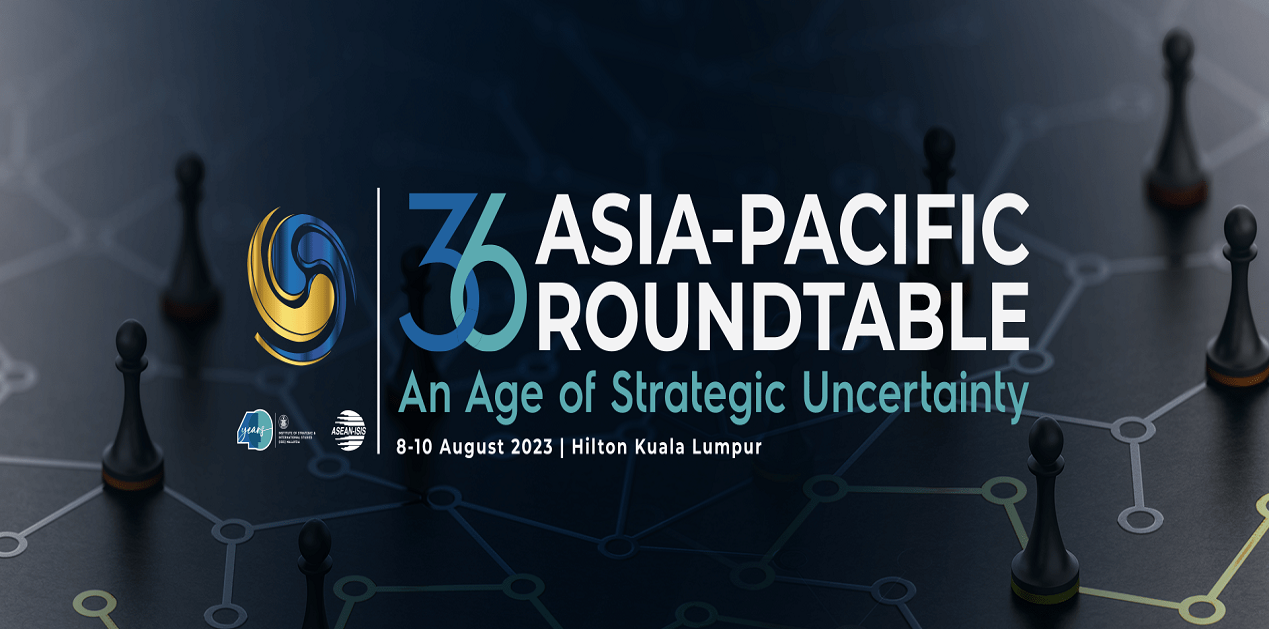
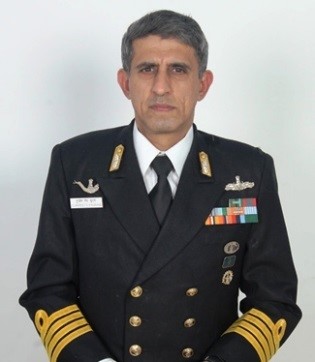

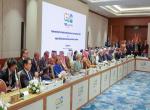
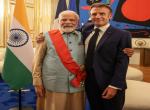

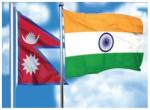


Post new comment